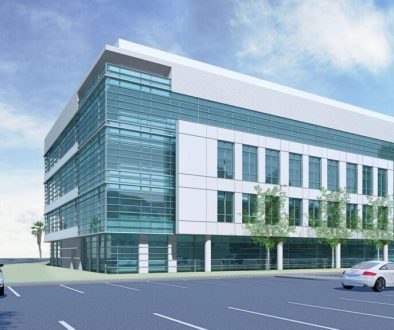How to Add Value to an Older Commercial Property
How to Add Value to an Older Commercial Property
As the real estate market continues to evolve, older commercial properties often face unique challenges. However, with the right strategies, these properties can be transformed into valuable assets that attract tenants and buyers alike. In this blog post, we will explore several effective methods for adding value to older commercial properties, from renovations and modernization to strategic marketing and property management. Whether you’re a property owner, investor, or real estate professional, understanding how to enhance the value of older commercial properties is crucial for achieving long-term success.
Understanding the Potential of Older Commercial Properties
Older commercial properties often come with significant advantages, such as prime locations, established communities, and unique architectural features. However, they may also require substantial improvements to meet contemporary market demands. According to a study by the National Association of Realtors, properties with modern amenities and efficient layouts attract more potential tenants and buyers, resulting in higher rental rates and sale prices.
A common misconception is that older properties are inherently less valuable. In reality, many older structures hold historical significance and character that can appeal to specific markets. For example, a vintage building in a bustling downtown area could attract creative businesses, eateries, or boutique shops looking for a unique setting. Understanding the potential of these properties is the first step in recognizing their value.
Renovations: Breathing New Life into Older Spaces
One of the most immediate ways to add value to an older commercial property is through renovations. This process not only enhances the aesthetic appeal of the property but also improves functionality and energy efficiency.
- Updating Infrastructure: Begin by assessing the property’s infrastructure, including plumbing, electrical systems, and HVAC. Upgrading these systems can lead to energy savings and reduce maintenance costs, making the property more attractive to tenants.
- Enhancing Curb Appeal: The exterior of the building is the first impression potential tenants or buyers will have. Consider landscaping, painting, and facade improvements to create an inviting atmosphere.
- Modernizing Interiors: Updating the interior design with contemporary finishes, flexible layouts, and modern amenities can significantly increase the property’s appeal. Open floor plans, natural lighting, and updated fixtures contribute to an inviting space.
A successful example of revitalization can be seen in the transformation of the historic Tobacco Warehouse in Brooklyn, New York. After extensive renovations, the warehouse was transformed into a vibrant commercial space that now houses shops, restaurants, and creative offices, significantly increasing its market value.
Implementing Sustainable Practices
In recent years, sustainability has become a key focus in commercial real estate. Implementing green practices can enhance the value of older properties while also attracting environmentally-conscious tenants.
- Energy Efficiency Upgrades: Installing energy-efficient windows, insulation, and HVAC systems can decrease operational costs and appeal to tenants looking to minimize their carbon footprint.
- Water Conservation Measures: Implementing water-saving fixtures and irrigation systems can lead to lower utility bills and enhance the property’s sustainability profile.
- Renewable Energy Sources: Consider installing solar panels or other renewable energy options. Properties with sustainable energy sources often command higher rental rates and appeal to a growing demographic of eco-conscious consumers.
Statistics from the U.S. Green Building Council indicate that green buildings can achieve 20% higher rental rates compared to conventional buildings. By adopting sustainable practices, older commercial properties can not only enhance their value but also contribute positively to the environment.
Strategic Marketing to Highlight Unique Features
Once renovations and improvements are completed, effective marketing strategies are essential to attract potential tenants or buyers. Highlighting the unique features of an older commercial property can set it apart from competitors.
- Utilizing Visual Storytelling: High-quality photography and virtual tours can showcase the property’s unique characteristics and improvements. Storytelling through visuals engages potential clients and creates a connection to the space.
- Targeted Advertising: Identify your ideal tenant or buyer demographic and tailor your marketing efforts to reach them. Whether it’s through online platforms, social media, or industry-specific publications, targeted advertising will increase visibility.
- Networking and Community Engagement: Attend local business events and engage with the community to establish relationships. Word-of-mouth marketing can be a powerful tool, especially for unique commercial spaces.
A notable instance of effective marketing is the revitalization of the historic Ponce City Market in Atlanta. The property was marketed not just as a commercial space but as a cultural hub, attracting a mix of retailers, restaurants, and community events.
Leveraging Technology for Efficient Property Management
Incorporating technology into property management can streamline operations, enhance tenant satisfaction, and ultimately increase property value. Smart technology can be particularly appealing to prospective tenants.
- Property Management Software: Using property management platforms can help owners streamline communication with tenants, handle maintenance requests promptly, and manage lease agreements more efficiently.
- Smart Building Technology: Implementing smart building systems, such as automated lighting, HVAC controls, and security features, can enhance the tenant experience while providing operational efficiencies.
- Data Analytics: Leveraging data analytics can help property owners understand market trends, tenant preferences, and operational efficiencies, allowing for informed decision-making regarding property improvements and marketing strategies.
A great example is the use of smart technology in commercial buildings like The Edge in Amsterdam, known as one of the most sustainable and technologically advanced office spaces. The integration of innovative technology has not only increased tenant occupancy but also elevated the value of the property.
Understanding Market Trends and Economic Factors
To maximize the value of older commercial properties, owners must stay informed about market trends and economic factors influencing the commercial real estate landscape.
- Market Analysis: Conducting regular market analysis can help property owners understand demand, rental rates, and local economic conditions. This insight allows for strategic adjustments to leasing strategies and property improvements.
- Demographic Shifts: Understanding the demographic trends in the area can inform decisions about the type of tenants to attract and the amenities to offer. Properties that cater to the preferences of the local population are more likely to succeed.
- Regulatory Changes: Keeping abreast of changes in zoning laws, building codes, and environmental regulations is essential. These factors can impact property value and the feasibility of certain renovations.
In cities like San Francisco, where tech companies are driving up demand for office space, older properties that adapt to meet these trends have seen significant increases in their market value.
Building Strong Relationships with Tenants
Fostering a positive relationship with tenants can enhance property value in several ways. Happy tenants are more likely to renew leases, leading to lower vacancy rates and increased revenue.
- Responsive Communication: Maintain open lines of communication with tenants to address concerns and respond to feedback. Regular check-ins can help foster a sense of community in the building.
- Tenant Amenities: Consider offering amenities that enhance tenant satisfaction, such as shared workspaces, fitness centers, or community events. These features can make the property more attractive and improve tenant retention.
- Feedback Surveys: Conducting regular surveys can provide insight into tenant needs and preferences, allowing for improvements that align with their expectations.
A classic example of tenant engagement is seen in co-working spaces like WeWork, which has successfully created a community-oriented atmosphere that attracts businesses looking for collaborative environments.
Conclusion
Adding value to older commercial properties requires a multifaceted approach that combines renovations, sustainability, effective marketing, and tenant engagement. By understanding the unique potential of older properties and implementing strategic improvements, property owners can enhance their appeal and profitability.
As the commercial real estate landscape continues to evolve, staying informed about market trends and technological advancements will be essential. For property owners and investors, recognizing the value in older commercial properties is a pathway to long-term success. If you are considering opportunities in commercial real estate, explore our services at Tower Business Brokers, Inc. and discover how we can assist you in maximizing your investment potential.



